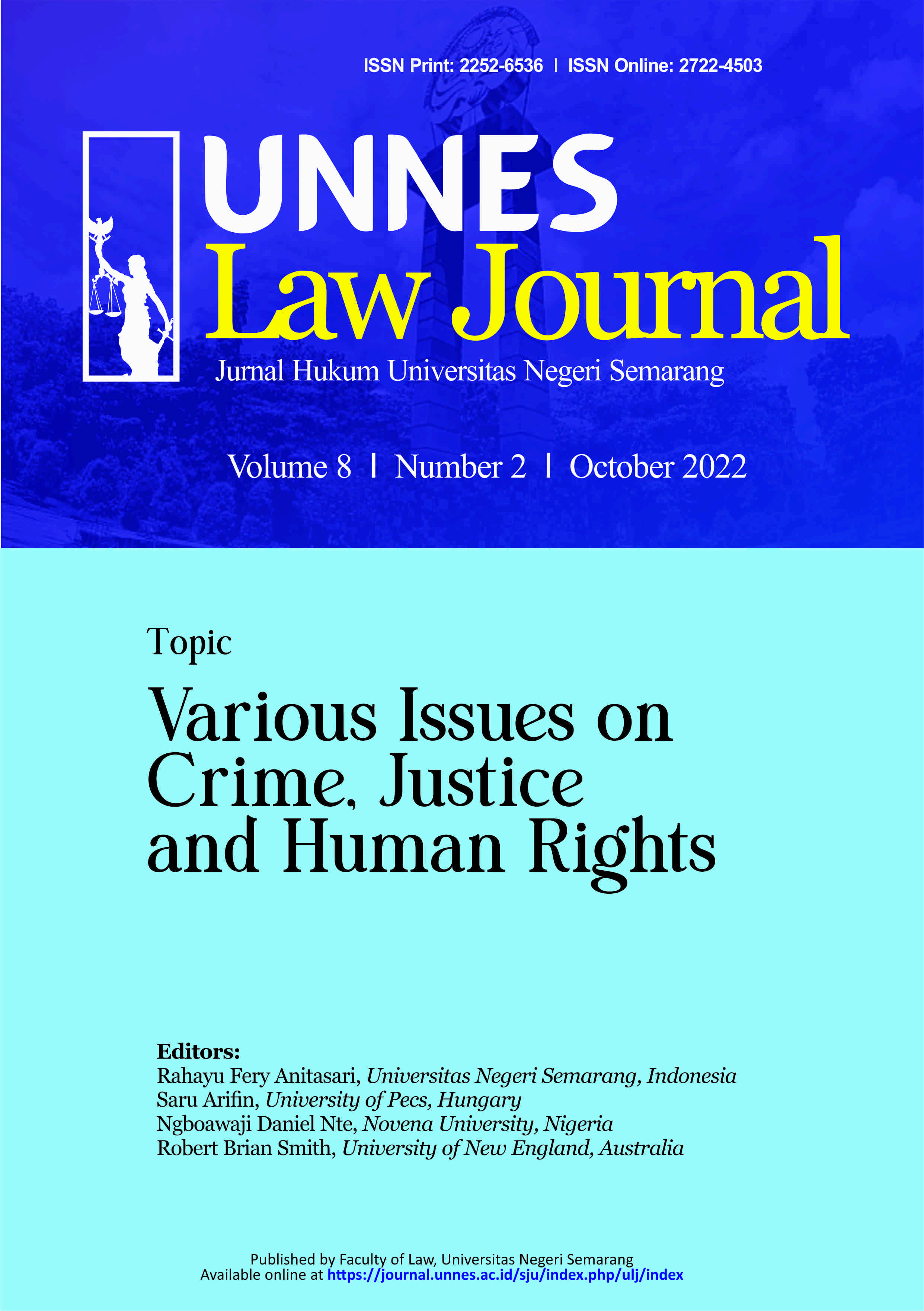Insight Into Intellectual Property in Patent Medicine: An Indian Perspective Intellectual Property Law, Patent Law
Main Article Content
Abstract
This paper aims at exploring intellectual property in relation to patent in medicine in India. Knowledge economy is the engine upon which development and creativity depends that has been instrumental in differentiating countries as developed or underdeveloped. India, being a member of World Trade Organization (WTO) has recognized the importance attached with IP thus investing hugely in intellectual advancement thereby reaping the advantages of second world population. Focusing on three key sectors namely, pharmaceutical, biotechnology, and IT sectors, scholars recognized the contributions these sectors offer to the growth domestic products and economic development of the countries. For instance, in India, many companies are continuously contributing to its economic development and growth at exponential rate. Many issues are discussed with regards to intellectual property.
Article Details
References
World Intellectual Property Organization (WIPO) on Intellectual property and traditional medical knowledge, art. 6. https://www.wipo.int/export/sites/www/tk/en/documents/pdf/background_briefs-e-n6-web.pdf. (2015).
World Health Organization Fact Sheet on Traditional Medicine, art. 134. (2008)
Gerard Marshall Raj & Rekha Priyadarshini, “Drug patents and intellectual property rights” Eur J Clin Pharmacol (2015)
WHO Fact sheet on traditional medicine, art. 134. www.who.int/mediacentre/factsheets/fs134/en/. (2008).
WTO’s Doha Declaration on Trade Related Intellectual Property Rights (TRIPS)
www.wto.org/english/tratop_e/trips_e/who_wipo_wto_e.htm.
World Intellectual Property Organization on What is Intellectual Property?. http://www.wipo.int/about-ip/en/index.html#ip. (2014).
Intellectual Property India on the Patents Act. http://ipindia.nic.in/ipr/patent/patent_Act_1970_28012013_book.pdf. (1970).
Ivan Stepanov, “Economic development dimension of intellectual property as investment in international investment law”, 23 J World Intellect Prop 736 (2020). wileyonlinelibrary.com/journal/jwip.
James Boyle, “A manifesto on WIPO and the future of intellectual property”, 9 Duke Law & Technology Review, 1-12 (2004).
S.K., Verma, and N.V. Muralidhar Rao, “Impact of the intellectual property system on economic growth: Fact-finding surveys and analysis in the Asian region (Country Report – India)” WIPO-UNU Joint Research Project (2007).
R. Tewari and M. Bhardwaj Intellectual property: A primer for academia (Professor Gurpal Singh Sandhu Honorary Director Publication Bureau, Panjab University Chandigarh, India). https://dst.gov.in/sites/default/files/E-BOOK%20IPR.pdf. (2021).
Peter Drahos, “The universality of intellectual property rights: Origins and development”. https://www.wipo.int/edocs/mdocs/tk/en/wipo_unhchr_ip_pnl_98/wipo_unhchr_ip_pnl_98_1.pdf. (1998).
Amanda Horan, Christopher Johnson, and Heather Sykes, Foreign infringement of intellectual property rights: Implications for selected U.S. industries. Office of Industries Working Paper U.S. International Trade Commission. https://www.usitc.gov/publications/332/id_14_100505.pdf. (2005).
WIPO Economics and Statistics Series on World Intellectual Property Indicators https://www.wipo.int/edocs/pubdocs/en/intproperty/941/wipo_pub_941_2012.pdf. (2012).
WIPO on World Intellectual Property Indicators 2020. https://www.wipo.int/edocs/pubdocs/en/wipo_pub_941_2020.pdf. (2020).
World Health Organization on traditional medicine strategy: 2014-2023. https://apps.who.int/iris/bitstream/handle/10665/92455/9789241506090_eng.pdf. (2013).
World Health Organization on Guidelines on developing consumer information on proper use of traditional, complementary, and alternative medicine, https://www.paho.org/sites/default/files/pm-who-traditional-medicines-consumer_0.pdf. (2004).
Division of Health Systems and Services Development (HSP) on Traditional, complementary and alternative medicines and therapies: Evaluation Plan of Work 2000-2001 And Plan of Work 2002-2003. https://iris.paho.org/bitstream/handle/10665.2/40322/trmeng.pdf?sequence=1&isAllowed=y. (2002).
Martin Fredriksson, “India’s traditional knowledge digital library and the politics of patent
classifications”, 9 Law and Critique, 2021. https://doi.org/10.1007/s10978-021-09299-7. https://www.diva-portal.org/smash/get/diva2:1565270/FULLTEXT01.pdf
Ryan Abbott, World Intellectual Property Organization on Documenting traditional medical knowledge. https://www.wipo.int/export/sites/www/tk/en/resources/pdf/medical_tk.pdf. (2014)
Robert J. Sayre, Introduction and Theory of Patent Claims, World Intellectual Property Organization (Harare, Zimbabwe, 3 September 2019). https://www.ili.ac.in/cstyle.pdf. (2022).
Turkey in Horizon, Intellectual property rights: Learn IP rights in horizon 2020. https://cdn3.euraxess.org/sites/default/files/domains/tr/th2020_ipr_brochure_eng_apr17.pdf. (2020).
WHO, Public health, innovation and intellectual property rights: Report of the commission on intellectual property rights, innovation, and public health. http://apps.who.int/iris/bitstream/handle/10665/43460/a88438_eng.pdf;jsessionid=A3B413408C87972D3504DAD61A9DBE17?sequence=1. (2006).
WIPO, What is intellectual property? https://www.wipo.int/edocs/pubdocs/en/wipo_pub_450_2020.pdf. (2020).
Public-Private Analytic Exchange Program, Intellectual property rights: Public-private analytic exchange program research findings. https://www.odni.gov/files/PE/Documents/7---2017-AEP_-Intellectual-Property-Rights.pdf. (2017).
S.K. Savale, and V.K. Savale, “Intellectual property rights”. 5(6) World Journal of Pharmacy and Pharmaceutical Sciences, 2529-2559. DOI: 10.20959/wjpps20166-7102. www.wjpps.com. (2016).
The Institute of Company Secretaries of India, Study material professional program intellectual property rights-laws and practices. https://www.icsi.edu/media/webmodules/CRCPP_IPRL%26P_2018_DEC_30.pdf. (2018).
Centre for Intellectual Property Rights, Anna University, Overview of intellectual property rights (IPRs): The what, why and how of the intellectual property rights in a nutshell. https://www.annauniv.edu/ipr/files/downloadable/Overview%20of%20IPR.pdf. (2020).
Nadezda Ljubojev and Sinisa Varga, “The patent law conception of invention”, 17(6) Metalurgia International, 160-165. https://www.researchgate.net/publication/293349263_The_Patent_Law_conception_of_invention. (2012).
H. Yuan, Q. Ma, L. Ye, and G. Piao, The traditional medicine and modern medicine from natural products, 21 Molecules, 559. www.mdpi.com/journal/molecules (2016).
Chidi Oguamanam, “Patents and traditional medicine: Digital capture, creative legal interventions, and the dialectics of knowledge transformation, 15(2) Indiana Journal of Global Legal Studies, 489-528. http://muse.jhu.edu/journals/gls/summary/v015/15.2.oguamanam.html. (2008).
Vinod Kumar Gupta, India, TKDL: Definition and Classification of Intangible Cultural Heritage and Traditional Knowledge in the Context of Inventory Making (paper presented at the Conference on Intangible Cultural Heritage and Intellectual Property Under the 2003 UN Convention for the Safeguarding of Intangible Cultural Heritage, New Delhi, India, March 25–27, 2007).
Umakant Mishra, Three tests of patentability, TRIZsite Journal, 2006.
World Intellectual Property Organziation, Topic 3 - Chapter II.B Legal Requirements for Patentability. https://www.wipo.int/edocs/mdocs/africa/en/wipo_pat_hre_15/wipo_pat_hre_15_t_3.pdf. (2015)
Tomoko Miyamoto, Patentability Criteria and Patent Grant Procedures at Country Level, https://www.wto.org/english/tratop_e/trips_e/miyamoto_trilatworkshop15_e.pdf. (2015).
Rajnish Kumar Rai, Patentable subject matter requirements: An evaluation of proposed exclusions to India's patent law in light of India's obligations under the TRIPS Agreement and options for India, 41 Chicago-Kent Journal of Intellectual Property, https://studentorgs.kentlaw.iit.edu/ckjip/wp-content/uploads/sites/4/2013/03/03_8JIntellProp412008-2009.pdf. (2008).
Manisha Shridhar, Sudhir K Jain and Vinayshil Gautam, “Patent activity by patent agents in India”, 14 Journal of Intellectual Property Rights, 142-148. http://www.nbpgr.ernet.in/assets/pdf/IPRarticle/014_patent_agents.pdf.(2009). https://www.wipo.int/edocs/mdocs/africa/en/wipo_pat_hre_15/wipo_pat_hre_15_t_1.pdf.
Manisha Shridhar, Sudhir K Jain and Vinayshil Gautam, “Patent activity by patent agents in India”, 14 Journal of Intellectual Property Rights, 142-148. http://www.nbpgr.ernet.in/assets/pdf/IPRarticle/014_patent_agents.pdf.(2009). http://ipindia.gov.in/writereaddata/images/pdf/office-of-cgpdtm.pdf.
United States Patent and Trademark Office Office of Enrollment and Discipline (OED). General Requirements Bulletin for Admission to the Examination for Registration to Practice in Patent Cases before the United States Patent and Trademark Office. https://www.uspto.gov/sites/default/files/documents/OED_GRB.pdf. (2008).
D.N. Raut, Herbal drug patenting, https://www.amrutpharm.co.in/doc/ppt/2019-20/patenting.pdf. (2019).
World Trade Organization, World Health Organization, World Intellectual Property Organization, “Promoting Access to Medical Technologies and Innovation: Intersections between public health, intellectual property and trade” (2nd ed.). https://www.wto.org/english/res_e/booksp_e/who-wipo-wto_2020_e.pdf. (2020).
Geneva Declaration (2004). Geneva Declaration on the Future of WIPO. https://www.iatp.org/sites/default/files/451_2_37319.pdf.
